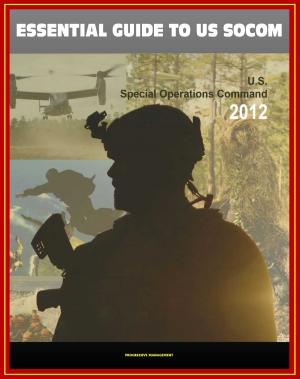Protecting America: Cold War Defensive Sites - Concise History of the Cold War and U.S. Military Sites, Extensive Bibliography and Source Information - Nuclear Weapons, Missiles
Nonfiction, History, Military, Nuclear Warfare, United States| Author: | Progressive Management | ISBN: | 9781301102204 |
| Publisher: | Progressive Management | Publication: | July 3, 2013 |
| Imprint: | Smashwords Edition | Language: | English |
| Author: | Progressive Management |
| ISBN: | 9781301102204 |
| Publisher: | Progressive Management |
| Publication: | July 3, 2013 |
| Imprint: | Smashwords Edition |
| Language: | English |
Because the Cold War era (1945-1991) is so recent, and the universe of potentially related properties is so vast, relatively few such properties have been identified, designated as National Historic Landmarks, or listed in the National Register of Historic Places. The majority of properties are fewer than fifty years old, and many have been demolished as sites have been deactivated or have been so altered as to be lacking in sufficient integrity for designation or listing. Although a few surveys have been made and several historic contexts have been written, there is an urgent need for more because the resources are disappearing.
The historic contexts section of this study is divided into three parts. The first part focuses on the origins and evolution of the Cold War from World War II until the death of Josef Stalin in 1953. This section discusses the ideological differences between the two principal adversaries, the dawn of the atomic age, and the weapons systems that each side developed. The second part concentrates on the Cold War at its coldest, as the United States and the Soviet Union appeared to settle into a period of endless provocations and proxy wars and the threat of nuclear annihilation often seemed likely to become a reality. By the end of this period, both sides had come to accept that matters could not be allowed to continue in these patterns, that a new way of dealing with each other had to be found. Detente was the first step. The third part brings the history of the Cold War to its conclusion, from the end of the Vietnam War and the beginnings of a thaw in relations because of presidential diplomacy, the rise of dissent in the Soviet Union (especially in Eastern Europe), and the final collapse of the Soviet economic and political structure.
This historic context should enable the researcher to understand the basic developments and the ways in which the weapons systems and defense programs of the United States were affected by international affairs and the political and military challenges of the Cold War era.
Although the Cold War touched virtually every aspect of life in the United States and abroad, the principal focus of this theme study is on the types of sites and resources described in Section 7210 of H.R. 146. Other important themes outside the scope of this study could be mentioned only briefly here—the home front, the influence of consumerism, the nuclear weapons complex, the civil defense system, the antiwar movement, and the movements for civil rights and other forms of social change, to name but a few. It is suggested that they be considered for future studies related to the Cold War.
Because the Cold War era (1945-1991) is so recent, and the universe of potentially related properties is so vast, relatively few such properties have been identified, designated as National Historic Landmarks, or listed in the National Register of Historic Places. The majority of properties are fewer than fifty years old, and many have been demolished as sites have been deactivated or have been so altered as to be lacking in sufficient integrity for designation or listing. Although a few surveys have been made and several historic contexts have been written, there is an urgent need for more because the resources are disappearing.
The historic contexts section of this study is divided into three parts. The first part focuses on the origins and evolution of the Cold War from World War II until the death of Josef Stalin in 1953. This section discusses the ideological differences between the two principal adversaries, the dawn of the atomic age, and the weapons systems that each side developed. The second part concentrates on the Cold War at its coldest, as the United States and the Soviet Union appeared to settle into a period of endless provocations and proxy wars and the threat of nuclear annihilation often seemed likely to become a reality. By the end of this period, both sides had come to accept that matters could not be allowed to continue in these patterns, that a new way of dealing with each other had to be found. Detente was the first step. The third part brings the history of the Cold War to its conclusion, from the end of the Vietnam War and the beginnings of a thaw in relations because of presidential diplomacy, the rise of dissent in the Soviet Union (especially in Eastern Europe), and the final collapse of the Soviet economic and political structure.
This historic context should enable the researcher to understand the basic developments and the ways in which the weapons systems and defense programs of the United States were affected by international affairs and the political and military challenges of the Cold War era.
Although the Cold War touched virtually every aspect of life in the United States and abroad, the principal focus of this theme study is on the types of sites and resources described in Section 7210 of H.R. 146. Other important themes outside the scope of this study could be mentioned only briefly here—the home front, the influence of consumerism, the nuclear weapons complex, the civil defense system, the antiwar movement, and the movements for civil rights and other forms of social change, to name but a few. It is suggested that they be considered for future studies related to the Cold War.















